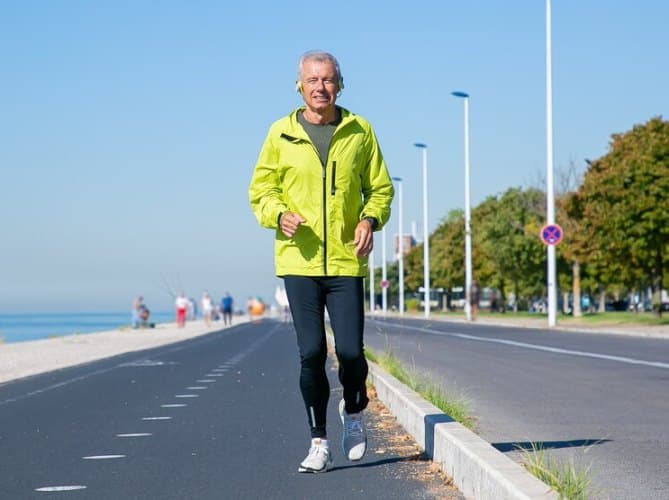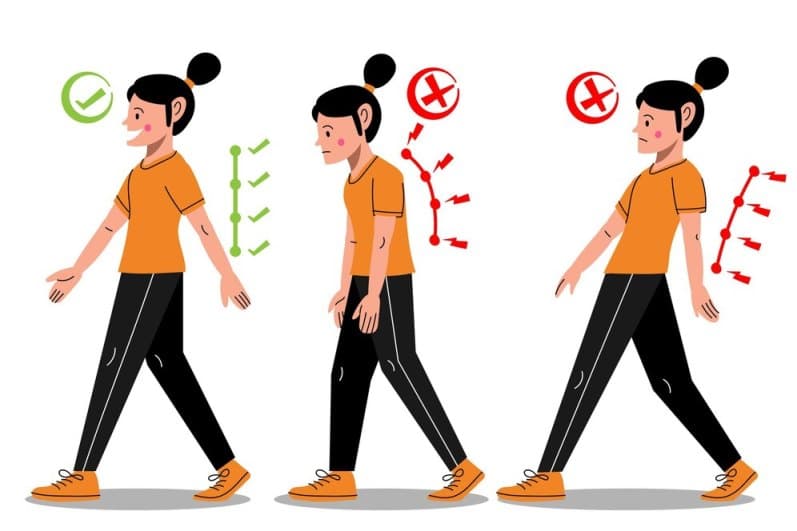However, it can be frustrating when your legs become tired and fatigued during a walk, limiting your ability to continue. If you want to avoid this discomfort and keep going strong, there are several strategies you can implement. Taking regular breaks and stretching your legs throughout your walk can help prevent tiredness.
Additionally, wearing comfortable and supportive shoes, maintaining a proper posture, and gradually increasing your walking distance and speed can contribute to reducing leg fatigue. By incorporating these measures into your routine, you can keep your legs fresh and enjoy your walks to the fullest.
Preparing For The Walk
Before embarking on a long walk or hike, it is essential to prepare your body to prevent tired and achy legs. By taking some simple steps to warm up properly and choosing the right footwear, you can ensure a more comfortable and enjoyable walking experience.
Choosing The Right Footwear
Wearing the right footwear is crucial to prevent leg fatigue and discomfort during a long walk. When selecting your walking shoes or sneakers, keep the following pointers in mind:
- Look for shoes that provide proper arch support and cushioning. This helps maintain the natural alignment of your feet and reduces strain on your leg muscles.
- Prioritize shoes that offer good shock absorption to minimize the impact on your legs and joints.
- Ensure the shoe fits properly, with enough room for your toes to wiggle. Tight shoes can lead to blisters and foot pain.
- Consider the terrain you’ll be walking on. If you’ll be navigating uneven or rocky surfaces, opt for shoes with sturdy soles and good traction to prevent slips and falls.
Warming Up Properly
Properly warming up your muscles before a walk can significantly reduce leg fatigue and stiffness. Follow these warming up techniques:
- Start with a brisk walk for 5-10 minutes to gradually increase your heart rate and warm up your entire body.
- Perform dynamic stretching exercises that target your major leg muscles, such as lunges, leg swings, or high knees. This helps improve flexibility and increases blood flow to your leg muscles.
- Include some light cardio exercises, like jumping jacks or jogging in place, to further elevate your heart rate and prepare your muscles for the walk ahead.
Do not forget that warming up doesn’t have to be time-consuming. A few minutes of targeted stretching and light activity can make a significant difference in preventing tired legs during your walk.
Read Also: Leg Shakes When Stretching in Bed
Improving Endurance in Legs While Walking
Improve endurance and prevent tired legs by gradually increasing walking distance and pace. Incorporate strength training and stretches into your routine to build muscle and aid in recovery. Focus on proper footwear and maintaining good posture to reduce fatigue while walking.
Incorporating Strength Training
One effective way to improve your endurance and prevent tiredness in your legs while walking is by incorporating strength training exercises into your routine. Strength training helps to build muscle and increase stamina, allowing you to walk longer distances without feeling fatigued.
Start by adding exercises that target the muscles in your legs, such as squats, lunges, and calf raises. Aim for at least two to three sessions per week, gradually increasing the intensity as your strength improves. You can start with lighter weights and proper form to avoid injury.
You can also include exercises that focus on your core and upper body, as they play a crucial role in maintaining good posture and balance during your walks. Planks, push-ups, and shoulder presses are great options to consider.
Gradually Increasing Distance
To improve your endurance and prevent tiredness in your legs, it’s essential to gradually increase the distance you walk over time. Pushing yourself too hard at once can lead to exhaustion and muscle fatigue.
Begin by setting realistic goals and gradually increasing your walking distance by 10-15% each week. This gradual progression allows your body to adapt and build endurance without putting excessive strain on your legs.
You can also incorporate interval training into your routine, where you alternate between periods of faster-paced walking and slower recovery walks. This technique helps to improve cardiovascular fitness and build endurance.
Listen to your body and pace yourself during your walks. If you feel any pain or discomfort, it’s crucial to take breaks and allow your muscles to recover.
Maintaining Energy Levels While Walking
Easily increase your energy levels while walking by implementing these helpful tips to prevent tired legs and fatigue. Start with proper hydration, incorporate a regular stretching routine, and maintain a balanced diet to optimize your endurance and keep your legs feeling strong throughout your walks.
Staying Hydrated
To maintain your energy levels while walking, staying hydrated is crucial. When your body lacks water, it can lead to fatigue and muscle cramps.
To avoid dehydration, make sure to drink plenty of water before, during, and after your walk. Aim for at least eight glasses of water per day, and consider carrying a water bottle with you during your walks to stay hydrated and refreshed.
Eating Balanced Meals
Another important aspect of maintaining energy levels while walking is eating balanced meals. Your body needs the right fuel to keep going, so focus on foods that provide a mix of carbohydrates, proteins, and healthy fats.
Carbohydrates will give you quick energy, while proteins and fats will provide sustained energy. Incorporate whole grains, lean proteins, fruits, vegetables, and nuts into your diet to keep your energy levels steady throughout the day.
Eat a well-balanced meal before your walk, and if you’re planning a longer walk, consider bringing a small snack with you. Snacks such as an apple with peanut butter or a handful of mixed nuts can provide a quick energy boost to keep your legs from getting tired.
Avoid heavy, greasy meals before walking as they can make you feel sluggish and slow you down.
Optimizing Walking Technique
Walking is an excellent form of exercise that helps promote cardiovascular health and improve stamina. However, it’s common for our legs to start feeling tired, especially during long walks. But fear not, there are ways to optimize your walking technique to prevent fatigue and keep going strong!
Here are some tips to help you maintain correct alignment while walking:
- Keep your head up and your gaze forward, avoiding looking down at the ground.
- Engage your core muscles by tightening your abdominal muscles slightly.
- Relax your shoulders and let them fall naturally, avoiding tension or hunching.
- Ensure your arms swing naturally, bent at a slight angle, and opposite to your leg movements.
Incorporating proper breathing techniques can improve your walking endurance and prevent leg fatigue. Here’s how:
- Breathe deeply and rhythmically; inhale through your nose and exhale through your mouth.
- Coordinate your breathing with your steps, aiming to inhale for a certain number of steps and exhale for the same number.
- Focus on belly breathing, allowing your diaphragm to expand and contract with each breath.
Stretching is an essential pre and post-walking routine that can help prevent leg muscle tightness and fatigue. Try these stretching exercises:
| Stretch | Description |
|---|---|
| Quad Stretch | Stand straight, bend one knee, and bring your foot towards your glutes. Hold onto your foot with the corresponding hand and feel the stretch in your quadriceps. Repeat on the other side. |
| Calf Stretch | Find a wall or sturdy surface to lean against. Take a step back with one foot and press the heel into the ground while keeping the back leg straight. You should feel a stretch in your calf muscle. Repeat on the other side. |
| Hamstring Stretch | Place one foot on a slightly elevated surface, keeping the leg straight. Lean forward from the hip, reaching towards your toes. Feel the stretch in the back of your thigh. Repeat on the other side. |
Conclusion
Walking is a simple and effective way to stay active and maintain good health. However, tired legs can be a common issue that hinders our walking progress. By following the tips shared in this blog post, such as stretching exercises, proper footwear, and staying hydrated, you can alleviate leg fatigue while walking.
Always pay attention to your health and take break when necessary. Keep these suggestions in mind and enjoy your walking adventures without tired legs holding you back.

